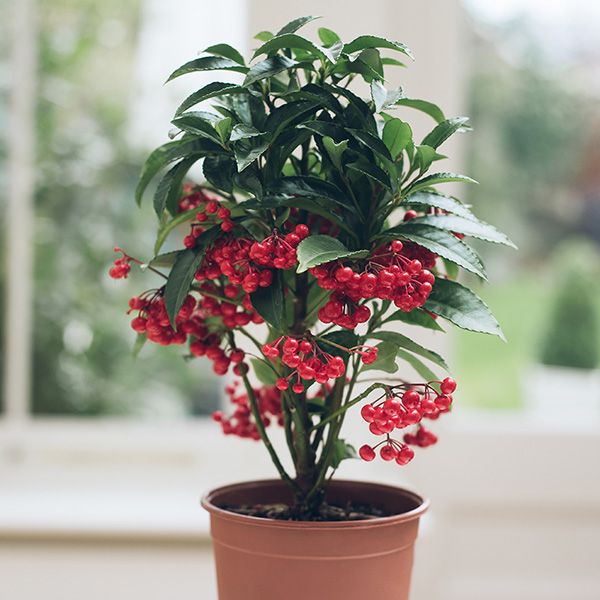
Ardisia crenata 'Queen Star'. Copyright: Pinterest.
Contents
- Top Tips
- Location, Water, Humidity & Fertilisation
- Dormancy Period & Achieving Flowers
- Common Issues
- Origins, Temperature, Propagation, Repotting & Toxicity.
Need the answer to a specific plant query? Book a 1-to-1 video call with THE HOUSEPLANT DOCTOR™, the website's friendly author, to overcome and address your niggling problem! Available on iMessage, WhatsApp, Facebook Messenger & more.
Top Tips & Info
- Care Difficulty - Moderate to Hard
- Coral Berries like bright light away from excessively dark situations. Although an hour or two of direct sunlight in the early morning is accepted, be sure not to fall in the trap of sun-scorch and dehydration. A north, north-east or west-facing window is perfect for goof health.
- Provide near-constant moist soil, allowing the soil's top third to dry out in between waters.
- Fertilise every four waters all year round, using a 'Houseplant' labelled fertiliser to ensure quality foliage and flower/berry development.
- Repot every three years during the spring, using a 'Houseplant' labelled potting mix.
- Keep an eye out for Spider Mites & Mealybugs that'll hide in the plant's cubbyholes and underneath the leaves.
Location & Light - 🔸🔸
If you're a forgetful waterer, avoid direct sunlight costs - the combination of too little soil moisture and intense rays will quickly lead to a miserable plant. If, however, you can provide good soil moisture throughout the year, a splash of either morning or evening sun will significantly benefit your plant. Never situate it in a shady spot.
Location: Place this on, or within two metres of a north-facing window if you tend to under-water plants. A metre away from an east or west-facing windowsill is the ideal location for good quality growth over the year. Never situate this species in full sun, or a location that'll exceed the maximum temperature bracket of 25ºC (77ºF) - an example of this would be an east or south-facing conservatory.
Water - 🔸🔸🔸
Coral Berries aren't a fan of having dry feet for too long. Once the top third of the soil has dried out, give the plant a good water over the sink to avoid water-logging issues. Whilst the specimen is holding berries, it's essential not to use cold water as this will quickly shock the roots, causing multiple issues down the line. Under-watering symptoms include rapid berry loss and dry, sunken leaves; these issues are usually due to either forgetfulness, too much sunlight or too much heat. Over-watering symptoms include rotting lower leaves, yellowing leaves, a loss of flowers or berries, and root rot. Allow the majority of the soil to dry out in between waters, preventing a pool of standing water from accumulating beneath the pot.
Humidity - 🔸🔸
Average room humidity is more than enough to occupy Coral Berries. Never situate this plant within three metres of an operating radiator as it will cook both the plant and the surrounding air moisture.
Fertilisation - 🔸🔸
Use a fertiliser high in potassium to prolong its flowers during the festive period - an excellent example would be a 'Tomato' labelled product. Regular fertilisers, for instance, BabyBio or Miracle-Gro, will still do the job but will favour foliar growth instead. For the rest of the year, a standard 'Houseplant' labelled fertiliser can be used to supplement the plant, once every four waters.
Dormancy Care & Annual Flowers
Trying to achieve a bloom isn't the hardest of tasks, with those who have a cooler room without artificial light at night being on the upper-hand. The following steps should be done at the end of summer until the start of spring when growth slows. Always think of ukhouseplants' acronym of SHORT when it's time for flowers.
They're better off staying pot bound for several reasons, including the prevention of root rot or transplant shock, and to put momentarily stress on the plant. Although this may sound harsh, a restriction of roots is the best way to obtain flowers, as it'll send out clusters in response to becoming under threat. As long as the plant is subsequently repotted every three years in the spring, no harm is done.
Sunlight & Location
Be sure to provide a bright location with partial sunlight of up to three hours a day. For the specimen to fully become seasoned, avoid the use of artificial lighting or locations that boast temperatures higher than 18℃ (64℉).
Hydration
Reduce waters so that about half of the soil becomes dry. It's essential to keep them on the drier side to life, as they'll think that hard times are ahead and therefore will need to pass their genes on to the next generation.
Occasional Feeds
While in bloom, use a 'Tomato' fertiliser to provide monthly nourishment of potassium.
Reduce Everything
This one is to remind you that everything needs to be reduced - especially the temperature.
Temperature
This is the most significant step; reduce the temperature down by around 5℃ compared to the summertime or place in a room that's around 15℃ (59℉). The drop in temperature should ideally last until the inflorescence finishes blooming, although it can still be transferred into the main house as long as it sits on a pebble tray. You'll be at a significant disadvantage if the ambient temperature is kept constant throughout the year, as Coral Berries will only respond with flowers in cooled environments. Never exceed the minimum temperature as it could lead to plant death or yellowed foliage at a bare minimum.
Common Issues with Coral Berries
Under-watering is the biggest issue when it comes to Coral Berries. Typical signs of this include wilting, sunken leaves, rapid flower or bud drop and stunted growth. Not only will you have to be mindful of persistent droughts, think about which plant parts to keep dry. Its foliage must also remain dry at all times to prevent the development of diseases and blights. Those situated in direct sunlight or within four metres of a radiator are more likely to suffer from under-watering related issues.
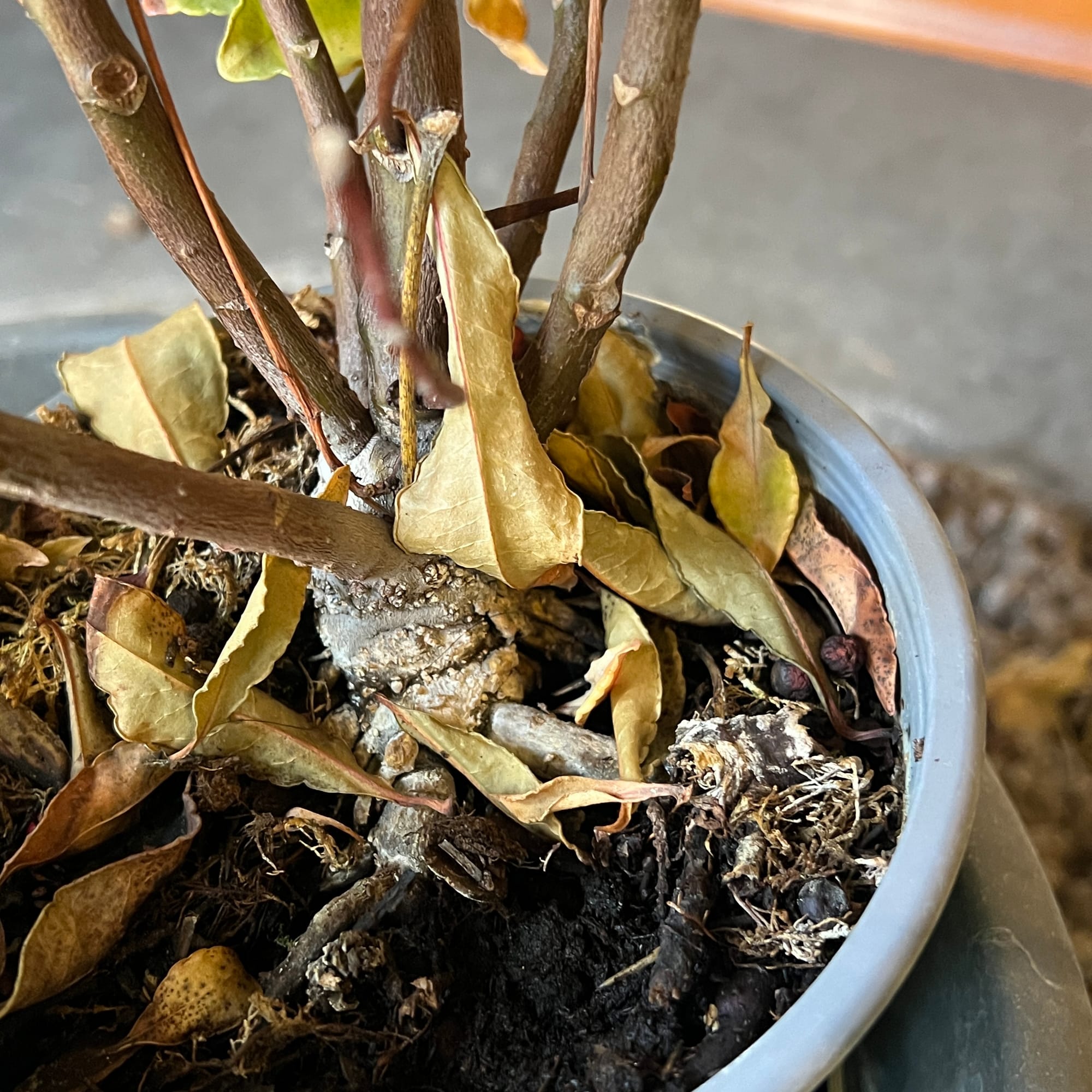 Leaf loss is common with Ardisia (Coral Berry Plants) and doesn't indicate an unhealthy specimen. If, however, more than five leaves are dropping per week, THE HOUSEPLANT DOCTOR™ recommends checking the soil for root rot. Other reasons for sudden leaf loss could be dehydration or low temperatures (below 8℃, 46℉)
Leaf loss is common with Ardisia (Coral Berry Plants) and doesn't indicate an unhealthy specimen. If, however, more than five leaves are dropping per week, THE HOUSEPLANT DOCTOR™ recommends checking the soil for root rot. Other reasons for sudden leaf loss could be dehydration or low temperatures (below 8℃, 46℉)
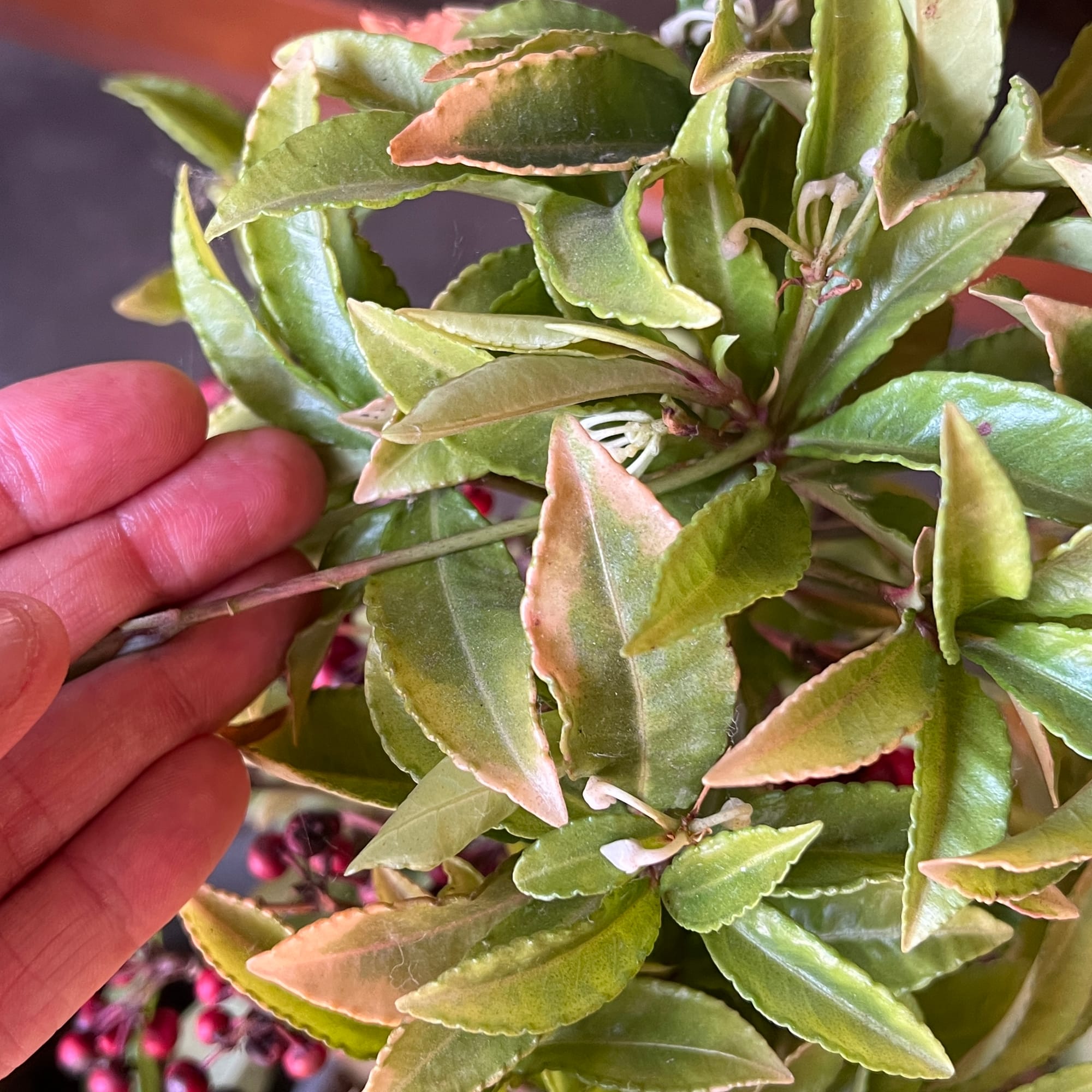 Ardisia crenata with yellowed leaves (like this) are most likely to be sun-scorch. Although these plants can do remarkably well in sunny windows, THE HOUSEPLANT DOCTOR™ would deem this location to be too bright as its leaves are struggling. Relocate the plant to another windowsill with less sunlight to help it recover (don't change the watering or feeding regimes).
Ardisia crenata with yellowed leaves (like this) are most likely to be sun-scorch. Although these plants can do remarkably well in sunny windows, THE HOUSEPLANT DOCTOR™ would deem this location to be too bright as its leaves are struggling. Relocate the plant to another windowsill with less sunlight to help it recover (don't change the watering or feeding regimes).
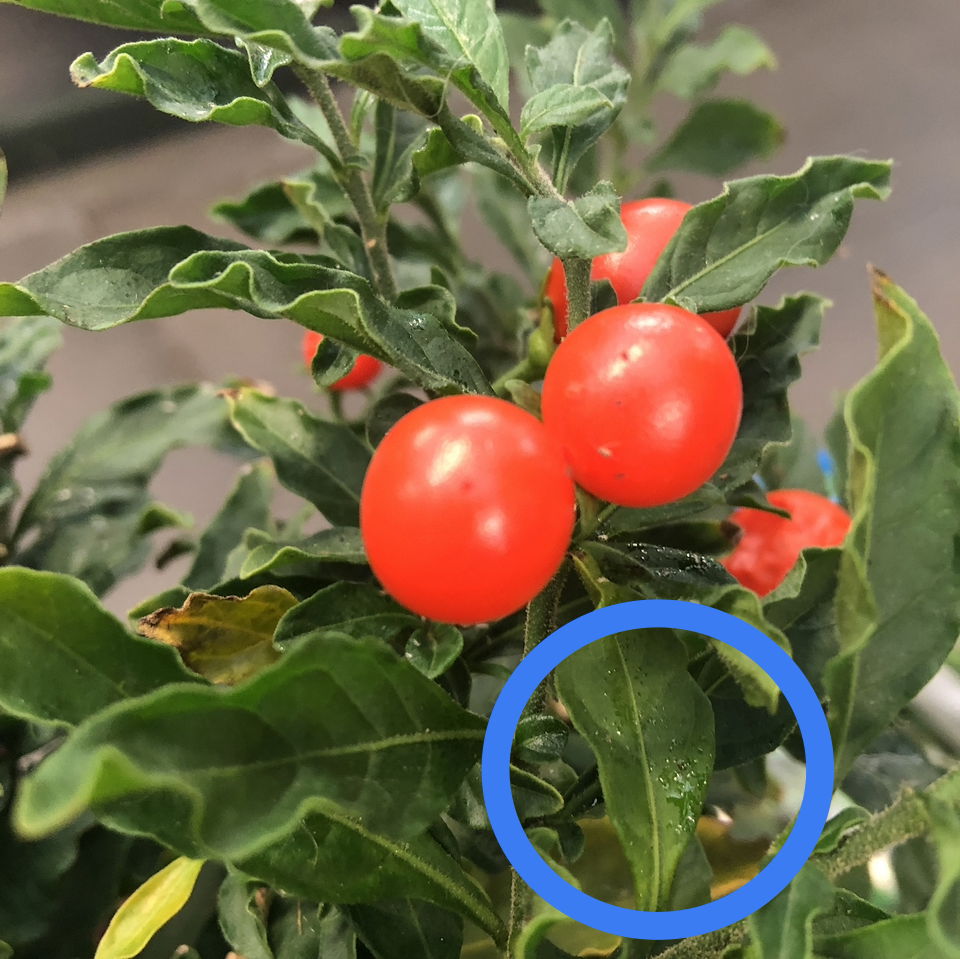 If the leaves of your Ardisia crenata (Coral Berry Plant) have become sticky or shiny, you may have an issue with Aphids. Click on this link to learn more about eradicating them!
If the leaves of your Ardisia crenata (Coral Berry Plant) have become sticky or shiny, you may have an issue with Aphids. Click on this link to learn more about eradicating them!
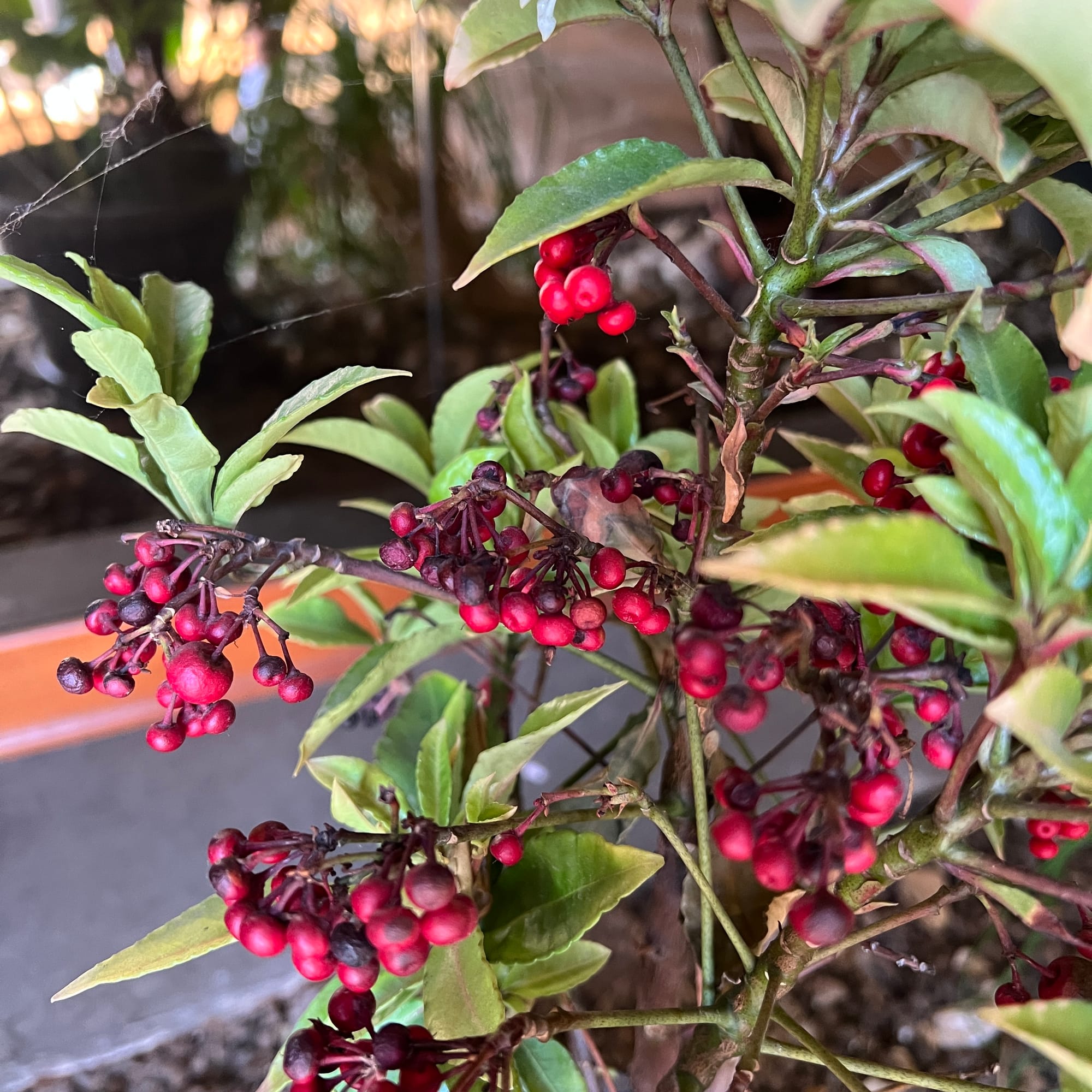
After around eight weeks, the berries of your Ardisia (Coral Berry Plant) will begin to turn brown/black and drop off. Like the image above, there's nothing wrong with your plant's health. Scroll up to 'Dormancy Care & Annual Flowers' to learn more about what to do next.
Sudden flower/berry loss can be caused by an array of different issues, including a change in location, too little hydration, too hot or cold temperatures or droughts and pests. Whilst the plant is in bloom, keep the soil evenly moist, to hydrate the thirsty work of producing flowers and berries. Locations that are outside of the recommended temperature bracket, or have drastic fluctuations must also be kept off the cards, as Coral Berries can be very sensitive to the ambient warmth that they're situated in. The final issue could be to do with pests. Although it's improbable that an infestation will cause a sudden change in health, have a quick inspection for Whitefly, Aphids and Mealybugs.
Origins
This species was first described by John Sims in 1818, placing it in the subgenus of Crispardisia. The term, 'Ardisia', comes from Latin to mean the 'point of an arrow', referring to the needle-like corollas of each flower, with the specific epithet, 'crenata', also acknowledging the crenated flowers.
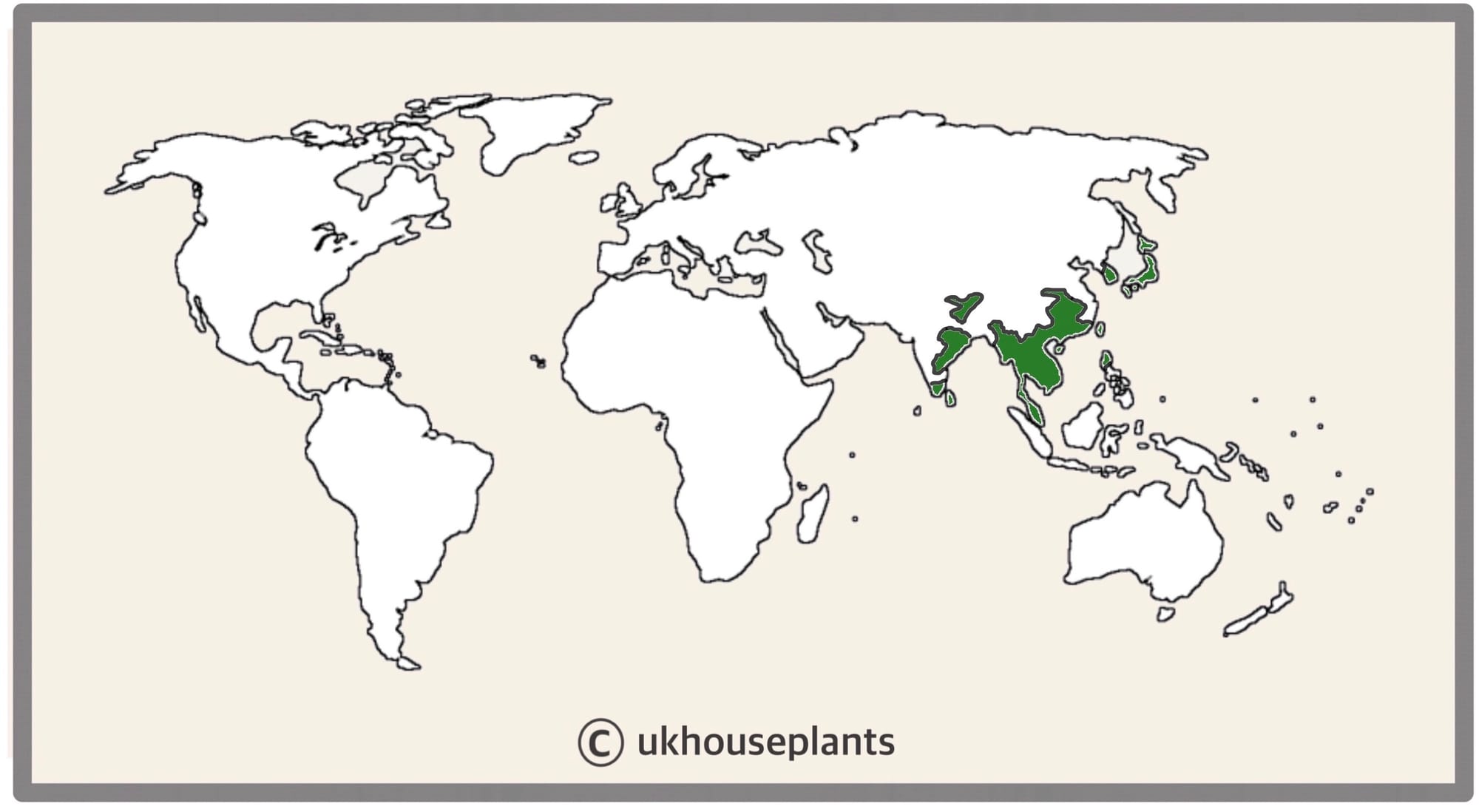 The Distribution of Ardisia crenata.
The Distribution of Ardisia crenata.
Temperature
8° - 25°C (46° - 78°F)
H1c (Hardiness Zone 12) - Can be grown outdoors between late spring and summer throughout most of the UK while nighttime temperatures are above 12℃ (54℉). If you decide to bring the plant outdoors, don't allow it to endure more than an hour of direct sunlight a day as it may result in sun-scorch. Regularly keep an eye out for pests, especially when re-introducing back indoors.
Spread
Up to 1m in height and 0.5m in width. The ultimate height will take between 5 - 8 years to achieve when grown indoors.
Pruning & Maintenance
Remove yellow or dying leaves, and plant debris to encourage better-growing conditions. While pruning, always use clean utensils or shears to reduce the chance of bacterial and fungal diseases. Never cut through yellowed tissue as this may cause further damage in the likes of diseases or bacterial infections. Remember to make clean incisions as too-damaged wounds may shock the plant, causing weakened growth and a decline in health.
It's quite difficult for amateurs to shape a Coral Berry, as it'll require a lot of effort over eighteen months to promote a globular shape. Instead, allow the flowers to fully elapse (usually in the end of winter) before pruning the foliage back a third in time for spring.
Propagation
Via Seed or Stem Cuttings.
Seeds (Moderate to Difficult) - If your specimen has berries, remove the flesh to gain access to the seed within - use a pair of gloves if you have sensitive hands. Peel the skin of the seed off to help speed up the rate of germination and soak it in lukewarm water for around 24hrs in a dark location - preferably on top of an operating radiator. The best soil to use is a ‘Houseplant’ labelled potting mix; however, multipurpose compost with added perlite and sand is as good. Set the seed around 1cm (0.5 inches) deep, resisting the temptation to compact it. Maintain evenly moist soil and allow the excess water to freely drain from the pot's base to prevent water-logged conditions. The ideal location for successful germination is in a bright, indirect setting with temperatures above 18℃+ (64℉+) with bottom-heat. Keep the pot in a transparent bag with small holes to provide a stable level of humidity, along with longer-lasting soil moisture. Germination may take up to three months, so don't discard any unsuccessful seeds until this threshold has been surpassed. Remove the bag once the seedling produces its third leaf and then repot it into a 5cm pot. Repot as necessary and follow the care tips provided at the top of this article.
Stem & Eye Cuttings (Moderate to Difficult) - This method of propagation is troublesome without the aid of bottom-heat and a controlled environment. Choose the healthiest, most established stems that are wooded, yet still juvenile enough to bend slightly, being just thicker than a phone charger wire. Each cutting should only have a few leaves leaf, above 8cm of semi-wooded stem. Situate the cutting's lower half into moist 'Houseplant' compost; 'Blackleg' can occur when the bottom wound becomes infected, resulting in propagation failure - typically caused by water-logging or deep damage. Maintain bright light and evenly moist soil with the avoidance of direct sunlight or cold draughts. Wrap the pot (& foliage) in a transparent bag or within a miniature greenhouse, and provide bottom heat of temperatures above 18°C (54°F). Remove the bag and place into individual 7cm pots once the second new leaf emerges. Follow the same care routines, as mentioned in the article's top half. This method will take up to five months, so patience and the correct environment are paramount for success!
Flowers
Coral Berry plants will produce clusters of small white flowers from early summer onwards, with each bloom lasting two weeks once opened. If pollination is successful, the once white inflorescences will slowly emerge into red globular berries, staying fresh on the plant for up to eight weeks. Scroll up to 'Dormancy Care & Annual Flowers' to learn more about achieving yearly blooms.
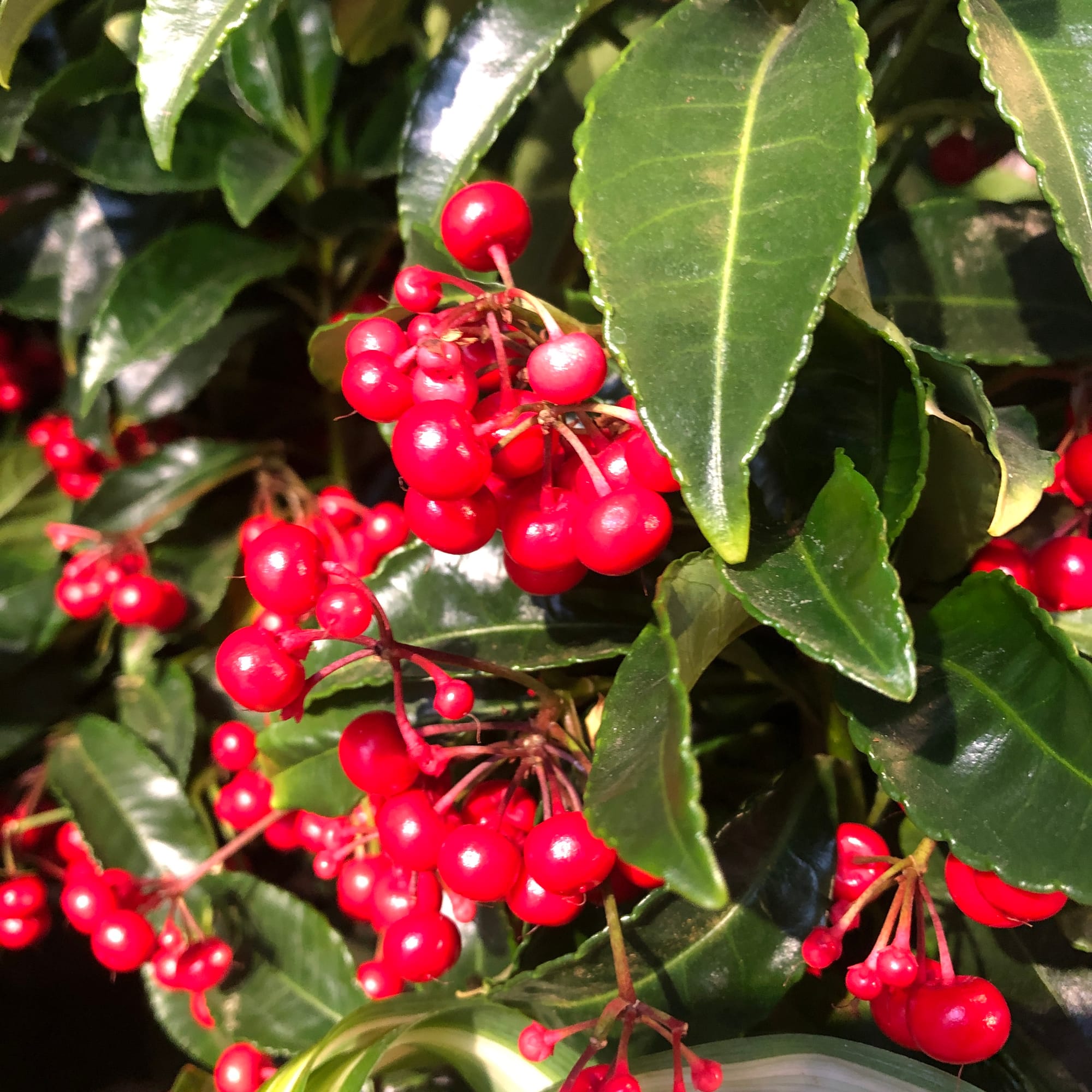 Each cluster of berries can last up to eight weeks on an Ardisia crenata, making it a great ornamental Christmas plant to brighten up your winter days.
Each cluster of berries can last up to eight weeks on an Ardisia crenata, making it a great ornamental Christmas plant to brighten up your winter days.
Repotting
Repot every three years in the spring, using a 'Houseplant' labelled potting mix and the next sized pot with adequate drainage. Coral Berries are far better potbound for several years due to the heightened risk of root rot and repotting-issues (like transplant shock), so only repot if you feel it's wholly necessary - restricted root growth will also increase the chance of blooms, too.
Hydrate the plant 24hrs before tinkering with the roots to prevent the risk of transplant shock. For those situated in a darker location, introduce an extra amount of perlite and grit into the deeper portion of the pot to downplay over-watering risks. Click on this link for a detailed step-by-step guide on transplantation, or via this link to learn about repotting with root rot.
Book a 1-to-1 video call with THE HOUSEPLANT DOCTOR™ if you'd like a personal guide to repotting your houseplant. This will include recommending the right branded-compost and pot size, followed by a live video call whilst you transplant the specimen for step-by-step guidance and answer any further questions!
Pests & Diseases
Keep an eye out for whitefly, spider mites, thrips, aphids & mealybugs. Common diseases with Coral Berries are root or crown rot, powdery mildew, leaf-spot disease, botrytis petal blight and powdery mildew. For more info on how to address any of these issues, hit this link - Identifying Common Houseplant Viruses & Diseases.
Toxicity
This species is considered poisonous if consumed by pets and humans. If high quantities are eaten, it may result in vomiting, nausea and a loss of appetite.
Retail Locations
Some florists & Online Stores. Specimens are likely to be found in autumn at most garden centres. A small selection of Coral Berries are sold during the spring and summer but generally won't last as long as those sold later in the year. It's not advised to bring outdoor specimens inside as this could lead to environmental shock or the introduction of foreign pests into the home.
Book a 1-to-1 Call with THE HOUSEPLANT DOCTOR™
If you need further advice with your houseplants, book an advice call with ukhouseplants' friendly and expert writer today! This can be done via a video or audio call on most apps, including Facebook, FaceTime & Skype. A ten-minute call costs £5.99 (US$7), or £15.99 for thirty minutes. You can ask multiple questions, including queries on plants, pests, terrariums, repotting advice and anything in between. Please consider supporting this service to keep ukhouseplants thriving!